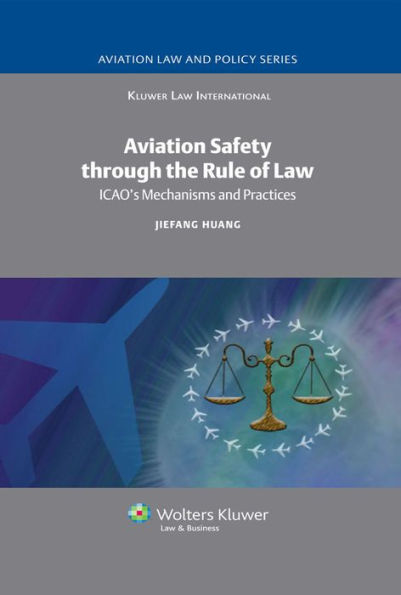Table of Contents
About the Author vii
Foreword xi
Acknowledgement xiii
List of Abbreviations and Acronyms xix
Introduction 1
Chapter 1 Defining Aviation Safety in View of the Global Interest 5
1.1 The Concept of Aviation Safety 6
1.2 Historical Development of Aviation Safety Regulations 8
1.3 Renewed Importance of Aviation Safety in Contemporary Society 15
1.4 Aviation Safety: The Raison D'être of ICAO 17
1.5 Concluding Remarks 21
Chapter 2 Regulation of Aviation Safety by Means of a Technical Safety Code 23
2.1 Establishment of Safety Oversight Responsibility 23
2.1.1 Responsibility of the State of Registry and/or the State of the Operator 24
2.1.2 Responsibility of States in Their Respective Territories 34
2.1.3 Critical Elements of the Safety Oversight System 42
2.2 Formulation of Technical Regulations 44
2.2.1 Subject Matters Addressed by SARPs 45
2.2.1.1 Personnel Licensing (Annex 1) 46
2.2.1.2 Rules of the Air (Annex 2) 47
2.2.1.3 Airworthiness of Aircraft (Annex 8) 48
2.2.1.4 Operation of Aircraft (Annex 6) 49
2.2.1.5 Other Annexes 49
2.2.2 Criteria for Safety Regulations: Uniformity, Reliability, and Affordability 50
2.2.3 Processes for Formulating Technical Regulations 54
2.2.4 Juridical Nature of Technical Regulations 58
2.2.5 Scope of Application of Technical Regulations 65
2.3 Auditing of State Compliance with Technical Regulations 68
2.3.1 Universal Safety Oversight Audit Programme 69
2.3.2 Universal Security Audit Programme 71
2.3.3 Legal Issues Arising from ICAO Audits 72
2.3.3.1 The Principle of Consent and the Mandatory Nature of Audits 73
2.3.3.2 Confidentiality and Transparency 76
2.3.3.3 Implications for International Law and Practice 77
2.4 Concluding Remarks 81
Chapter 3 Protecting Aviation Safety from Military Operations 83
3.1 Prohibition of the Use of Weapons against Civil Aircraft in Flight 83
3.1.1 Article 3bis and Customary International Law 84
3.1.2 Reactions of ICAO to the Use of Weapons against Civil Aircraft 89
3.1.3 Freedom of Action in Times of War or National Emergency 92
3.1.4 Revisiting Article 3bis in the Context of 11 September 2001 94
3.2 Coordination of Potentially Hazardous Activities to Civil Aircraft 100
3.3 General Relations between Civil and Military Aviation 104
3.4 Concluding Remarks 109
Chapter 4 Strengthening Aviation Safety against Unlawful Interference 111
4.1 The Tokyo Convention 112
4.2 The Hague Convention 119
4.3 The Montreal Convention 126
4.4 The Montreal Supplementary Protocol 133
4.5 The MEX Convention 139
4.6 Addressing New and Emerging Threats after 11 September 2001 147
4.7 Characterization of Crimes against the Safety of Civil Aviation 150
4.8 Concluding Remarks 155
Chapter 5 Enhancing Aviation Safety through the Rule of Law 157
5.1 Safety Obligations and Fundamental Norms 157
5.1.1 Safety and Obligations Erga Omnes 157
5.1.1.1 Obligations towards ‘the International Community as a Whole’ 159
5.1.1.2 ‘The Importance of the Rights Involved’ 161
5.1.1.3 Concern of All States 163
5.1.1.4 Positive Prescriptions of Obligations Erga Omnes 164
5.1.2 Safety Obligations and Jus Cogens 167
5.2 Safety and ICAO'S Regulatory Function 174
5.2.1 The Legal Effect of ICAO Assembly Resolutions 175
5.2.1.1 Declaratory Resolutions 176
5.2.1.2 Interpretative Resolutions 178
5.2.1.3 Pre-legislative Resolutions 178
5.2.1.4 Directive Resolutions 181
5.2.1.5 Recommendatory Resolutions 183
5.2.2 Concept of Quasi-Legislation or Quasi-Law 187
5.2.2.1 Doctrinal and Constitutional Basis for Quasi-Law 187
5.2.2.2 Essence of Quasi-Law 192
5.2.2.3 Scope of Quasi-Law 194
5.2.2.4 Effect of Quasi-Law 195
5.2.2.5 Implementation of Quasi-Law 197
5.3 ICAO Enforcement and Implementation Functions 199
5.3.1 Enforcement Functions 200
5.3.1.1 Enforcement under Article 54(j) of the Chicago Convention 200
5.3.1.2 Other Enforcement Mechanisms 202
5.3.2 Implementation Functions 203
5.4 Implementation at the National and Regional Level 204
5.4.1 Implementation in National Law in General 205
5.4.1.1 Monism 205
5.4.1.2 Dualism 206
5.4.1.3 Sui Generis Approach 207
5.4.2 Regional Implementation 207
5.4.3 Global Ramifications of National and Regional Initiatives 210
5.4.4 Reverted Monism? 214
5.5 Checks and Balance under the Rule of Law 217
5.5.1 Checks and Balances in ICAO Quasi-Judicial Activities 222
5.5.2 Checks and Balances of ICAO Quasi-Legislative Activities 222
5.6 Concluding Remarks 226
General Conclusions 229
Selected Bibliography 237
Index 253




